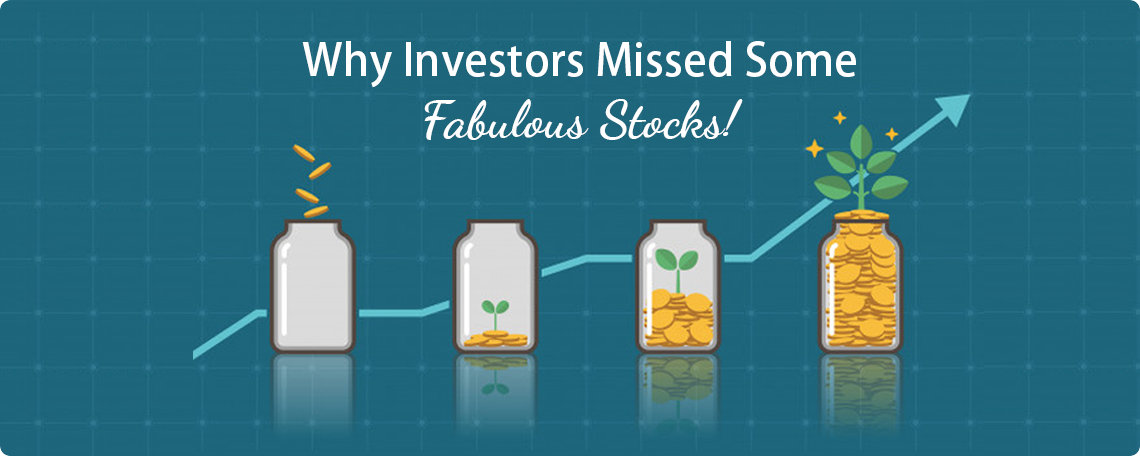Why Investors Missed Some Fabulous Stocks!
15256 Views | October 10, 2019

For years, most of the analysts and investors alike use Price-to-Earnings Ratio (P/E ratio) to assess the value of a company’s stock. A low P/E ratio is usually assumed to mean that the stock is undervalued and should be purchased, while a high P/E implies an overvalued stock that should be sold. This yardstick has been a prevalent factor in buy/sell decisions, but there is more than what meets the eye. A deeper analysis indicates that it is actually the percentage increase in EPS that should be the determinant of buy/sell decisions. Here is why:
You are missing on good stocks
If you avoid purchasing high P/E stocks (which are at 40-60 times earnings, or even greater), you may be missing out on attractive investments that have the potential to become multi-baggers going forward. For instance, companies like HDFC Asset Management, Titan, Hindustan Unilever, Avenue Supermarts, etc. would not feature in your prospective stock picks. These stocks, which were quoting at ‘high’ P/E multiples, have risen to new highs as a result of strong growth in earnings. Their earnings growth has been recognized by large institutional buyers, which has caused their stock prices to move to higher levels, and therefore, ‘higher’ P/E multiples. As a result, you would have missed out on attractive investment opportunities that would have boosted your portfolio value significantly.
On the other hand, purchasing a stock just because its P/E ratio makes it appear to be a bargain may be foolhardy. In fact, there could be good reasons for a stock quoting at a low P/E multiple and there are strong chances of the stock moving further down to eventually become a penny stock.
What about analysing company’s P/E with its Industry
Again, it is a wrong way to use of P/E ratio and compare it with its industry P/E and conclude that the one is selling at the cheapest P/E is always undervalued and therefore the most attractive purchase. The reality is, if a stock is trading at the lowest P/E it is possibly due to its poor earnings record.
High P/E stocks that were great buys
The truth is, a high P/E multiple for a company that has a great business model can actually be considered as a low P/E multiple! As an example, consider Avenue Supermarts, which after its successful Initial Public Offering (IPO), was listed on March 21, 2017 and sold for 124 times earnings and then rose 225% in price (from Rs. 600 per share to Rs. 1,945 per share). Similarly, Bajaj Finance sold for 45 times earnings in October 2016 before sprinting up 265%. If investors hold a bias against high P/E, they will miss great buying opportunities again and again.
To build a robust portfolio, invest in companies with the best quarterly and annual earnings growth, the highest return on equity, the widest profit margins, the strongest sales growth, and the right buy price. Do not fall into the P/E trap.




